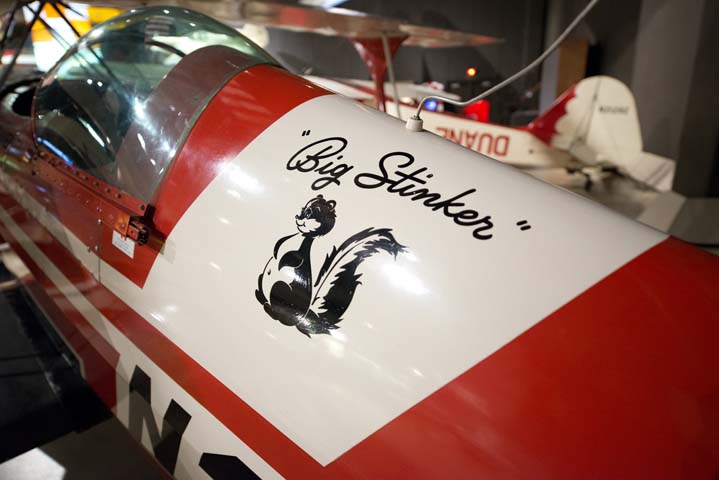1966 Pitts S-2 Special - N22Q
Location: Air Racing & Aerobatics
As Curtis Pitts, EAA 15785, was designing his round wing single-place airplane, the S-1 Special, he already had a two-place version in mind. Curtis started designing the S-2 in 1965 with high ambitions.
The most ambitious part of the new Special was that the airplane would be type certified. Having the S-2 certified would allow the airplane to be used as a commercial aircraft for instruction, enabling flight schools to open advanced aerobatics to a much wider audience. The drawback to creating a type certified airplane was that Pitts had to jump through all of the FAA regulatory hoops instead of remaining in the experimental realm. Pitts was the first person in nearly 35 years to design and certify an aerobatic biplane.
The S-2 was powered by a 180-hp Lycoming O-360, modified with the addition of inverted fuel and oil systems. The S-2 was first test flown in mid-1966, just in time to make the EAA fly-in convention at Rockford, Illinois. It couldn’t roll or climb with the S-1 because of the extra weight, but the S-2 could still perform all the maneuvers with ease.
Getting the S-2 certified was an entirely different problem. In 1967, the FAA was used to doing engineering certifications on the new series of jet airliners, where performance was measured in Mach and distances in continents. In the same stack was Curtis’ application for his rag-and-tube biplane that carried 22 gallons of fuel and was designed specifically to fly upside down. After many frustrating paperwork delays, the S-2 was finally certified.
Pitts joined forces with Herb Anderson who was running the plant producing Callair aircraft. Anderson helped Pitts develop a factory to manufacture the S-2. Together, the two accomplished a minor miracle: they certified a fully aerobatic airplane and put it into production.
The S-2 became the standard for advanced aerobatic training and set the stage for the factory to establish a long line of aerobatic airplanes. Pitts donated the revolutionary S-2 prototype to EAA in 1977.
Length: 17 feet, 9 inches
Wingspan: 20 feet
Empty Weight: 1,000 pounds
Maximum Speed: 157 mph
Seats: 2
Powerplant: Lycoming O-360
Horsepower: 180 hp





